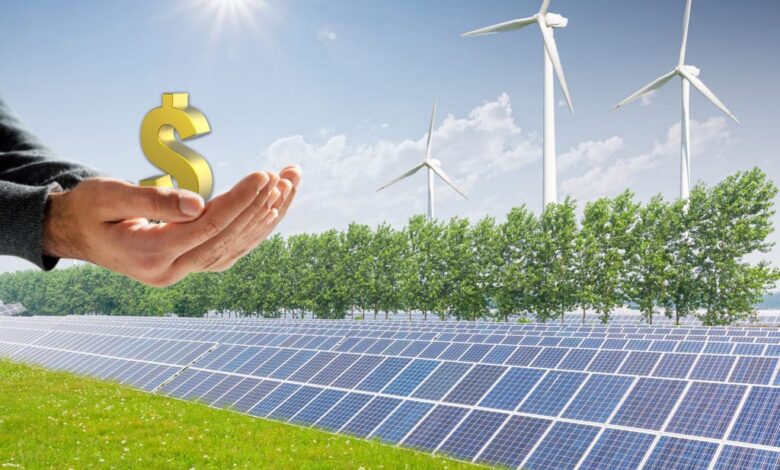Powering the Future: The Promise of Renewable Energy

The global energy landscape has undergone a significant transformation over the past few decades, with renewable energy emerging as a dominant force. This shift is largely driven by the urgent need to address climate change, reduce greenhouse gas emissions, and transition away from fossil fuels. The rise of renewable energy can be traced back to the growing awareness of the environmental impacts associated with traditional energy sources, such as coal, oil, and natural gas.
As scientific evidence mounts regarding the detrimental effects of carbon emissions on the planet, governments, businesses, and individuals have increasingly turned their attention to cleaner alternatives. Technological advancements have played a crucial role in the rise of renewable energy. Innovations in solar panel efficiency, wind turbine design, and energy storage solutions have made renewable sources more accessible and economically viable.
For instance, the cost of solar photovoltaic (PV) systems has plummeted by over 80% since 2010, making solar energy one of the most affordable sources of electricity in many regions. Similarly, wind energy has seen substantial growth, with onshore and offshore wind farms becoming integral components of national energy strategies. This technological evolution has not only facilitated the expansion of renewable energy but has also fostered a competitive market that encourages further investment and development.
Advantages of Renewable Energy
The advantages of renewable energy are manifold, encompassing environmental, economic, and social dimensions. One of the most significant benefits is its potential to mitigate climate change. Unlike fossil fuels, which release large quantities of carbon dioxide and other greenhouse gases when burned, renewable energy sources such as solar, wind, and hydroelectric power produce little to no emissions during operation.
This characteristic positions renewables as a key player in global efforts to limit temperature rise and achieve net-zero emissions targets set forth in international agreements like the Paris Accord. In addition to environmental benefits, renewable energy also offers substantial economic advantages. The renewable energy sector has become a major source of job creation worldwide.
According to the International Renewable Energy Agency (IRENA), the sector employed over 11 million people globally in 2018, with numbers expected to rise as investments continue to flow into clean energy projects. Furthermore, renewable energy can enhance energy security by diversifying energy sources and reducing dependence on imported fuels. Countries that invest in domestic renewable resources can stabilize their energy supply and insulate themselves from volatile fossil fuel markets.
Types of Renewable Energy Sources
Renewable energy encompasses a diverse array of sources, each with unique characteristics and applications. Solar energy harnesses sunlight through photovoltaic cells or solar thermal systems to generate electricity or heat. The versatility of solar technology allows it to be deployed at various scales, from small residential installations to large utility-scale solar farms.
The rapid growth of solar energy is evident in countries like Germany and China, where ambitious policies have spurred widespread adoption. Wind energy is another prominent renewable source that captures kinetic energy from wind currents using turbines. Onshore wind farms have proliferated across many regions, while offshore wind projects are gaining traction due to their potential for higher energy yields and reduced land-use conflicts.
Countries such as Denmark and the United Kingdom have made significant investments in offshore wind infrastructure, positioning themselves as leaders in this sector. Hydropower remains one of the oldest forms of renewable energy, utilizing flowing water to generate electricity. Large-scale hydroelectric dams have been instrumental in providing reliable power for decades; however, smaller run-of-the-river projects are gaining popularity due to their lower environmental impact.
Biomass and geothermal energy are also noteworthy contributors to the renewable mix. Biomass involves converting organic materials into energy, while geothermal taps into the Earth’s internal heat for power generation and heating applications.
Challenges and Obstacles in Implementing Renewable Energy
Despite its numerous advantages, the transition to renewable energy is not without challenges. One significant obstacle is the intermittency associated with certain renewable sources, particularly solar and wind. As mentioned by a solar power installer in Nowra, these resources are dependent on weather conditions and time of day, leading to fluctuations in energy production that can complicate grid management.
To address this issue, advancements in energy storage technologies, such as batteries and pumped hydro storage, are essential for ensuring a stable and reliable power supply. Another challenge lies in the existing infrastructure and regulatory frameworks that often favor fossil fuels over renewables. Many countries have entrenched systems that provide subsidies for fossil fuel extraction and consumption while offering limited support for clean energy initiatives.
This disparity can hinder investment in renewable projects and slow down the transition process. Additionally, public opposition to specific projects—such as wind farms or solar installations—can arise due to concerns about aesthetics, noise, or environmental impacts on local ecosystems.
Government Policies and Initiatives in Promoting Renewable Energy
Governments around the world have recognized the importance of promoting renewable energy through various policies and initiatives. Feed-in tariffs (FiTs) and power purchase agreements (PPAs) are common mechanisms that guarantee fixed payments for electricity generated from renewable sources over a specified period. These policies provide financial certainty for investors and encourage the development of new projects.
In addition to financial incentives, many governments are setting ambitious renewable energy targets as part of their national energy strategies. For example, countries like Sweden and Costa Rica have committed to achieving 100% renewable electricity generation within the next few decades. Such commitments not only signal a strong political will but also create a favorable environment for private sector investment in clean energy technologies.
International cooperation is also vital in promoting renewable energy on a global scale. Initiatives like the International Solar Alliance aim to facilitate collaboration among countries to accelerate solar deployment and share best practices. Furthermore, organizations such as IRENA provide valuable resources and data to support policymakers in their efforts to transition to sustainable energy systems.
Future Prospects and Potential of Renewable Energy
The future prospects for renewable energy are promising, with projections indicating continued growth across various sectors. According to the International Energy Agency (IEA), renewables are expected to account for nearly 80% of global electricity generation by 2050 if current trends continue. This shift to small businesses such as restaurants selling the best pizza in Victoria will be driven by ongoing technological advancements, decreasing costs, and increasing public awareness of climate issues.
Emerging technologies such as floating solar panels and advanced wind turbine designs are set to expand the potential for renewable energy generation even further. Additionally, innovations in hydrogen production from renewable sources could revolutionize the energy landscape by providing a clean fuel alternative for transportation and industrial processes. As countries strive to meet their climate goals and enhance energy security, the role of renewable energy will only become more critical.
The integration of renewables into existing grids will require innovative solutions such as smart grid technologies that enable better demand response and load management. The convergence of digital technologies with renewable energy systems presents an exciting frontier for enhancing efficiency and reliability. In conclusion, the rise of renewable energy represents a pivotal moment in our collective efforts to create a sustainable future.
With its myriad advantages, diverse sources, and growing support from governments worldwide, renewable energy is poised to play an essential role in addressing some of the most pressing challenges facing humanity today. As we look ahead, it is clear that the transition to a cleaner, more sustainable energy system is not just possible—it is imperative for the health of our planet and future generations.
